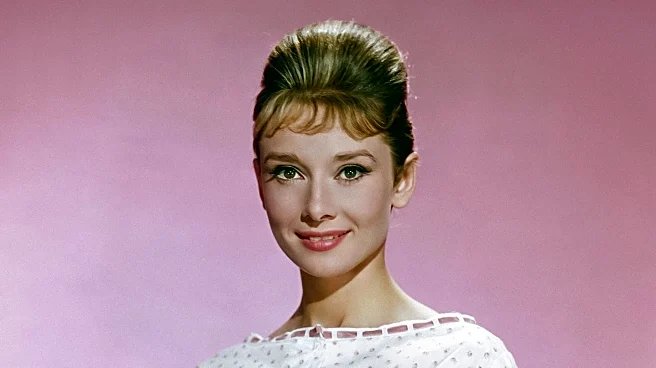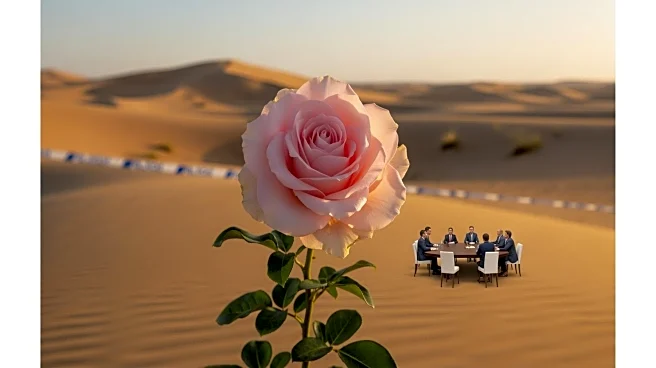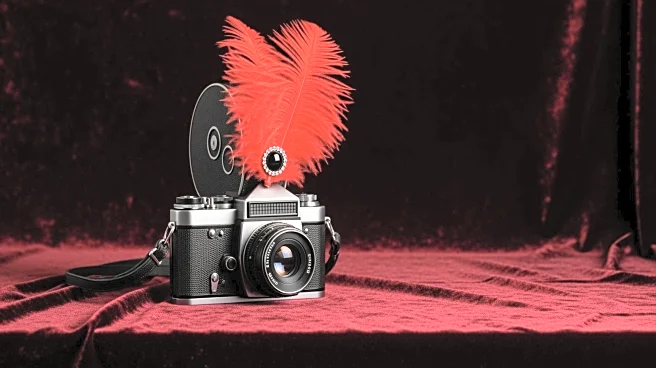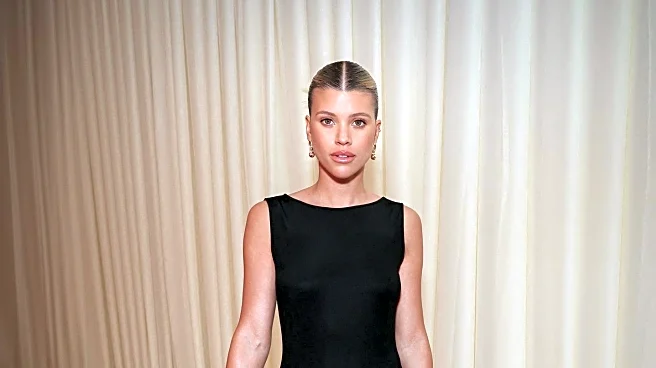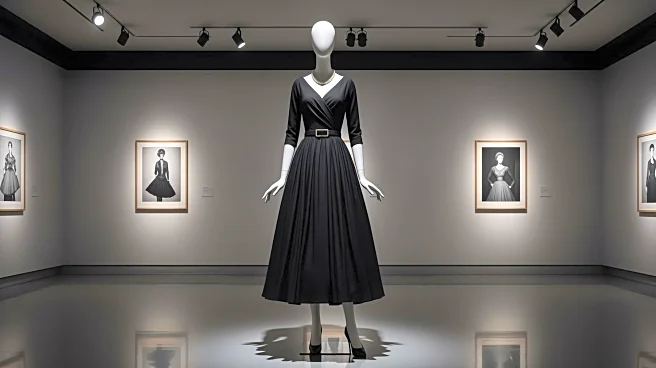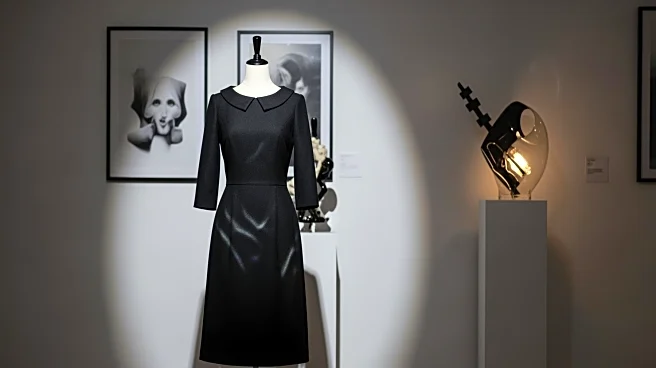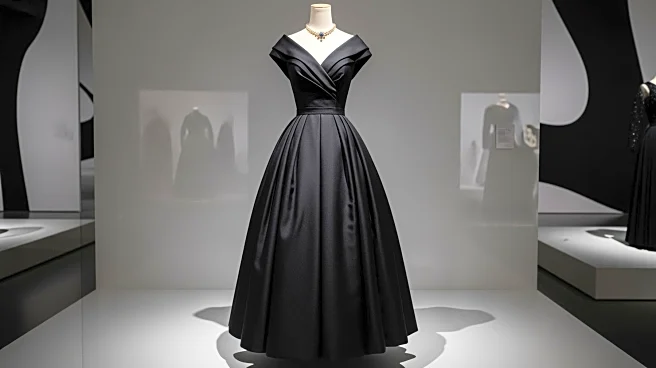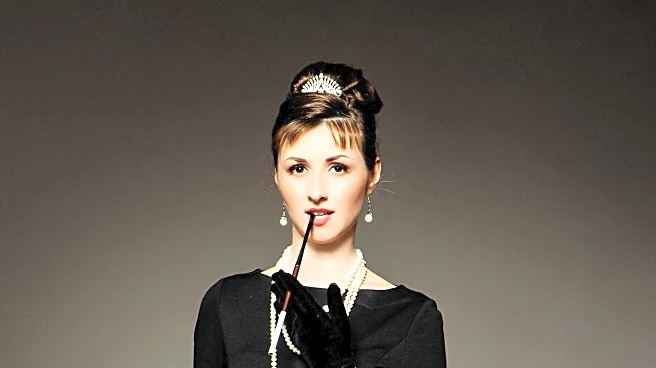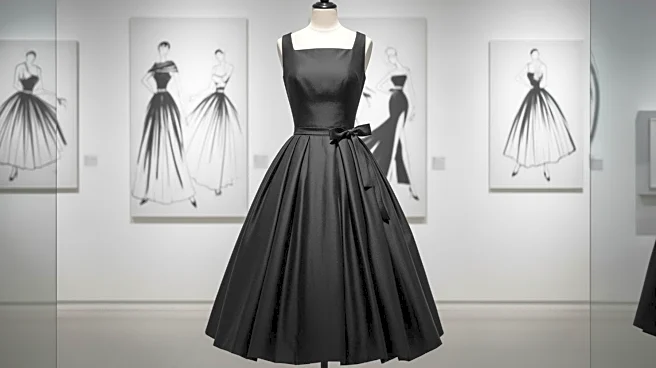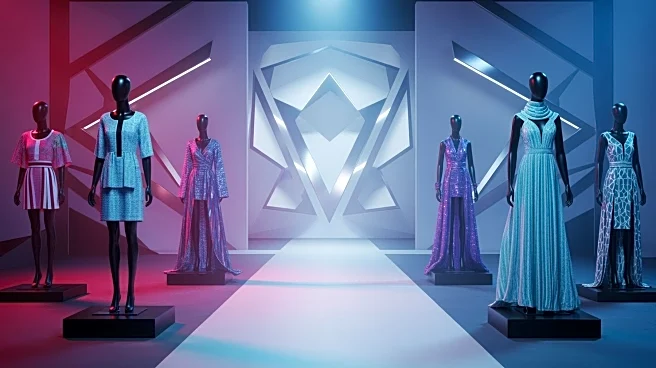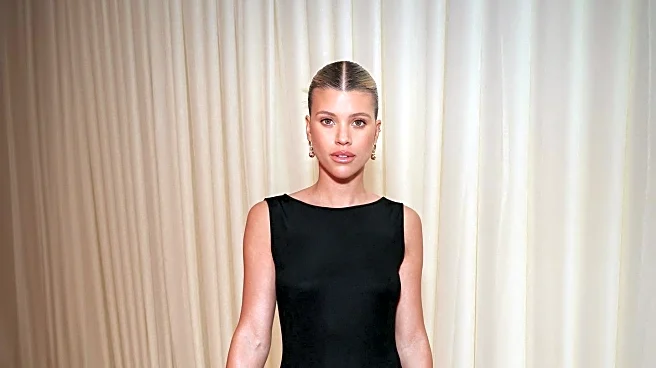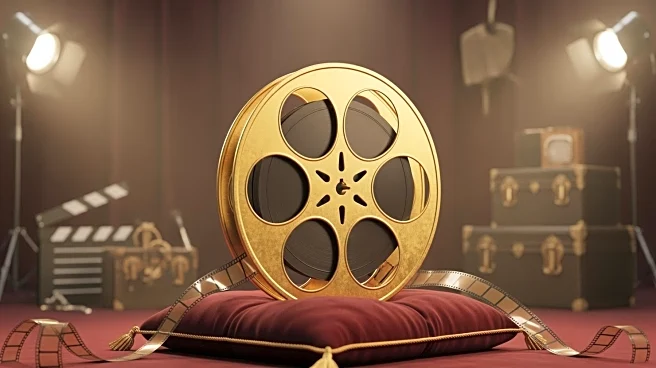What's Happening?
Vogue World 2025: Hollywood celebrated the intersection of fashion and film by featuring iconic costumes, including Audrey Hepburn's famous Givenchy dress from 'Breakfast at Tiffany's'. Paramount Studios lent Vogue a 1960 copy of the original dress, which
was designed by Hubert de Givenchy in collaboration with costume designer Edith Head. The dress, known for its elegant black boatneck design, was showcased alongside other iconic film costumes at the event. The floor-length satin dress, part of the fall 1960 haute couture collection, was complemented by a replica of the five-strand pearl necklace that Hepburn wore in the film.
Why It's Important?
The inclusion of Audrey Hepburn's iconic dress at Vogue World 2025 highlights the enduring influence of classic film fashion on contemporary style. This event underscores the cultural significance of fashion in cinema, showcasing how historical designs continue to inspire modern trends. By featuring such iconic pieces, Vogue World 2025 bridges the gap between past and present, offering a platform for the appreciation of timeless fashion. This celebration not only honors the legacy of fashion icons like Hepburn but also reinforces the role of film in shaping fashion narratives.
What's Next?
The event sets a precedent for future collaborations between fashion and film industries, potentially leading to more exhibitions that celebrate iconic costumes. As fashion continues to draw inspiration from cinematic history, designers may increasingly look to classic films for creative ideas. This could result in a resurgence of vintage styles in modern collections, influencing both high fashion and mainstream apparel. Additionally, the success of Vogue World 2025 may encourage other studios to open their archives, offering new opportunities for fashion retrospectives.
Beyond the Headlines
The event raises questions about the preservation and accessibility of historical fashion pieces. As iconic costumes are showcased, there is a growing interest in the ethical considerations of maintaining and displaying such artifacts. This could lead to discussions on the responsibilities of fashion houses and studios in preserving cultural heritage. Furthermore, the event highlights the potential for fashion to serve as a medium for storytelling, using clothing to convey narratives and evoke emotions associated with classic films.
